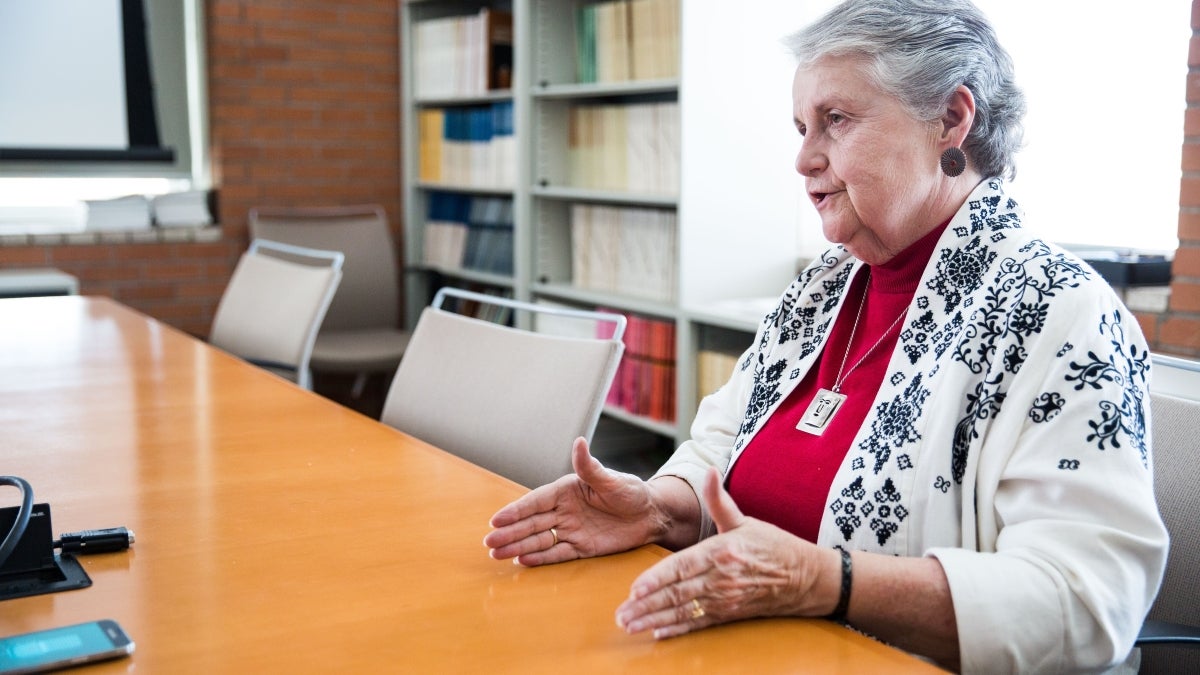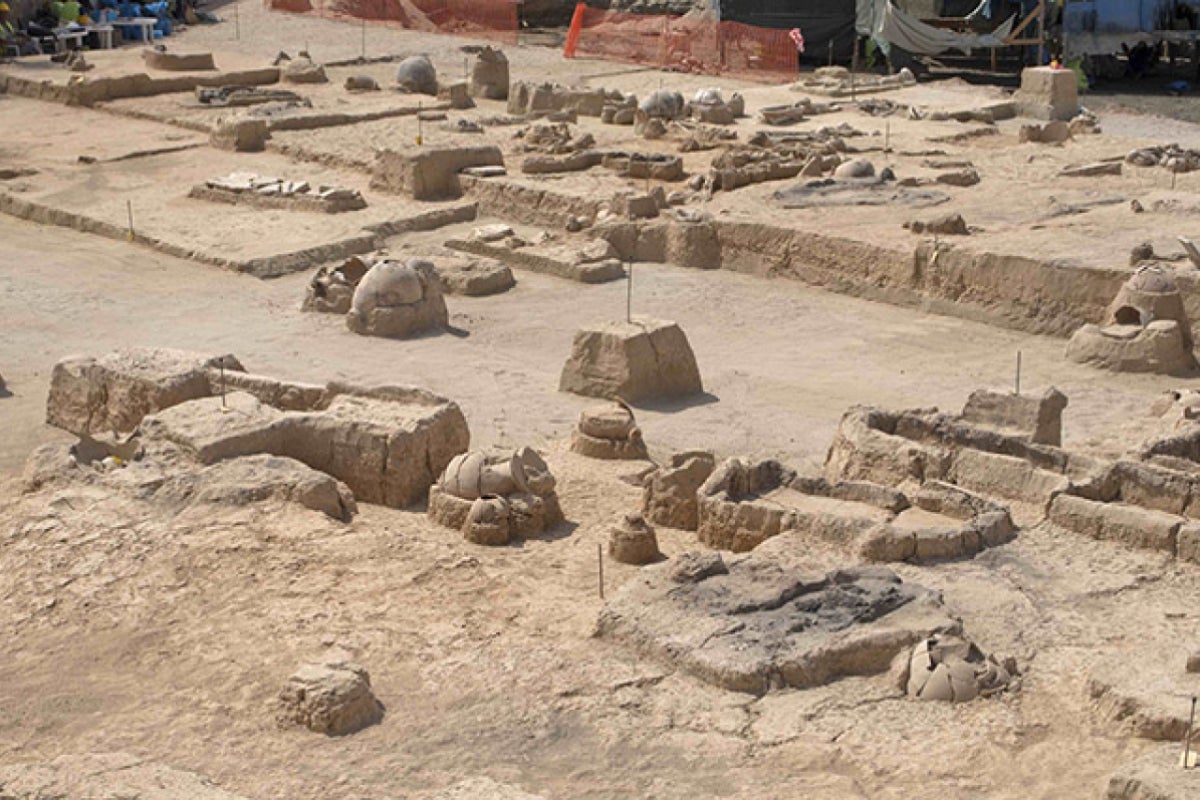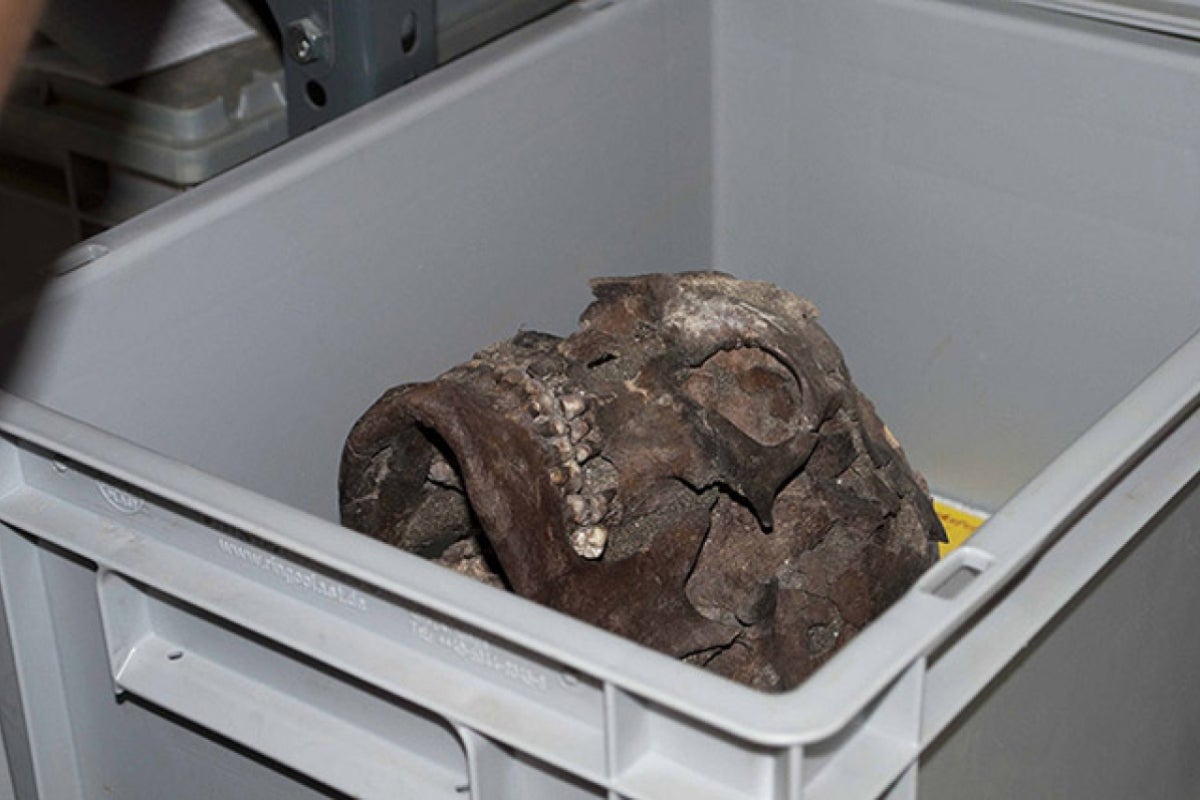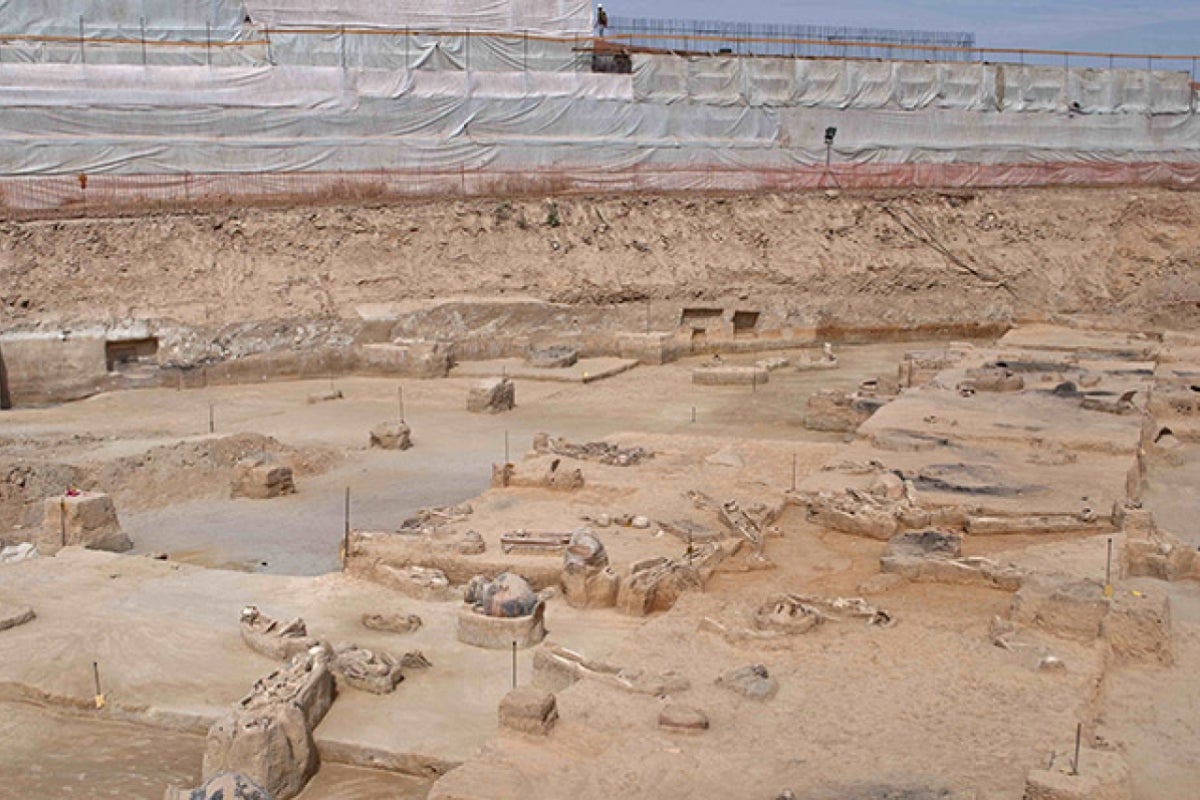Unearthing a mystery from history

Sometime between 2,800 and 2,500 years ago, just before the city-state of Athens was born, about 150 people in shackles were thrown into a burial pit in a Greek port city.
Were they prisoners of war? Criminals? Political prisoners? Slaves?
The pit was a necropolis — a cemetery, literally a city of the dead, used for centuries. Besides the manacled people tossed in heaps, facedown or tangled together, more than 400 infants and children were buried there in ceramic jars, obviously cared for and treated well, even in death. One person was buried in a wooden boat. Why were all these different people — 1,500 of them, both adored and scorned — buried in the same spot?
It’s a mystery from history, and Jane Buikstra has embarked on a quest to solve it.
“I’m really very excited,” said Buikstra (pictured above), Regents’ Professor Buikstra is a Regents' Professor of bioarchaeology in the School of Human Evolution and Social Change, which is part of the College of Liberal Arts and Sciences.of bioarchaeology at Arizona State University, and founding director of the Center for Bioarchaeological Research. “It’s very special.”
Buikstra is leading the project to study and curate the remains of the 1,500 people buried at the Athens port of Phaleron (also known as Phalerum).
“About 10 percent of the burials are unusual,” she said. “They were buried shackled. There’s a new feature which is getting a lot of press which I haven’t seen but I’ve heard about. There were a number of individuals thrown into a pit with their arms over their heads, probably — possibly — crucified with their hands above their heads. They didn’t crucify them on crosses. They crucified them on boards, where they’d hang people — whether they were prisoners or war captives, whatever — on boards and then place them out where they could be seen, such as a hill beside the site.”
It was a message.
“Don’t do this, whatever it was,” Buikstra said.
The period is just before the formation of the polis, the city-state that became the basis of the Western world. Identifying who the people of Phaleron were, and how the city-state of Athens rose, are some of the many questions Buikstra and her crew hope to answer.
“There were a lot of strong personalities — not all of which were neighbors you’d like to live next to — who were vying for power at the time,” Buikstra said. “It’s exciting for me to learn about a period I didn’t know all that much about. I’ve worked a lot in the Western Hemisphere. It’s my first major project in the eastern Mediterranean, so it’s exciting to learn about history and what’s been written, to learn that we can put another face on this, that of people who are seldom represented terribly well in written history. History is written by elite people, and they typically have an agenda.”
On Buikstra’s agenda are some burning questions.
Why were beloved children and hated captives buried in the same place?
“That is a question, and we don’t know why,” she said. “The analyses will be able to tell us about diseases.”
Press reports claim the interred were Greeks. Actually, no one knows who they were, or where they came from. Phaleron was a port; they very well may have been sailors or travelers from other countries.
“This port city will be a wonderful place to get a baseline for some of the diseases entering Europe,” Buikstra said. “This was before the great plagues. We should be able, by looking at the chemical signatures and teeth, to talk about diet, but also origins. Were these people local to that region?”
Most intriguing, who were the shackled and crucified dead?
“We are very interested in knowing if these shackled folk appear to be political prisoners or local people from lower socioeconomic classes,” she said. “The whole way in which the Greek armies and the political climate was changed about 2,000 years ago. You had a lot of tensions between the urban area in Athens and the farmers. That frequently played out in tensions between the groups.”
Buikstra wants to create a site management plan for the Phaleron necropolis. Her main task will be to curate and inventory the 1,500 sets of remains before they are analyzed. She has never worked on a site involving that many people before.
“That is unusual,” she said. “I’m sure we’re going to prioritize the group with the shackles.”
They’re a long way from analyzing the skeletons to find out what they ate, how they died, and what their physical condition was. “My goal is to have the archaeological and osteological database online,” Buikstra said.
Buikstra is co-leading the Phaleron Bioarchaeological Project with geoarchaeologist Panagiotis Karkanas, director of the Wiener Laboratory at the American School of Classical Studies at Athens. Their immediate goal for the skeletons showcases the crucial link between excavation of human skeletons and analysis: curation.
The biggest obstacle, besides parsing bones more than 20 centuries old for answers?
“There is no money for the conservation and the curation of the material,” Buikstra said. “And of course for the study either. We are faced with the challenge and the opportunity of taking the material from the excavation — which is now stored in storage containers like you see on trains, but temperature- and humidity-controlled — into the Wiener lab for study.”
Buikstra is considered the founder of the field of bioarchaeology. The field of study uses all the information about remains and their context, moving from an artifact- and object-centered investigation to a people-focused study, looking at individual and community lives. Bioarchaeologists look at chemical signatures in soil and bones. To use an analogy that bioarchaeologists (and homicide detectives) hate, it’s CSI for the ancient world. Were they malnourished? Did they have tuberculosis? Did they eat a lot of one particular type of food? And why? Before Buikstra, archaeology focused on stuff the dead guy was buried with. She shifted that focus onto the dead guy himself.
“There’s been a long tension between the way in which classical archaeologists do historical archaeology and anthropological archaeology, which is what we do in the U.S. and is more scientific in its methodology and theoretical orientation,” Buikstra said. “These two haven’t always been best friends, shall we say. The time has come now in the 21st century where the two sides are coming together and the classical archaeologists are appreciating what learning about the soils can do, learning about the plant residues and so on, rather than just the architecture. Now we can learn about the people as well as the architecture.”
The project has caught the imagination of Buikstra’s students.
“I’m particularly excited because there are several students who are interested in it,” she said. “I always learn from my students.”
The American School of Classical Studies at Athens said the scope and range of the burials are of unparalleled importance for the study of ancient Athens and its port of Phaleron in the Archaic Period.
“The potential that these burials provide for increasing our understanding of ancient Greek society is significant,” the school said in a press release. “Questions concerning ancient diet and disease, as well as social and political processes — such as the death penalty, political reforms and legislation — can potentially be answered. These answers could then lead to comparative studies that would eventually have global impact.”
Buikstra couldn’t be happier.
“I hadn’t expected to take on a new project at this stage in my career, but this is so enticing,” she said. “Here we go.”
Top photo by Deanna Dent/ASU Now



